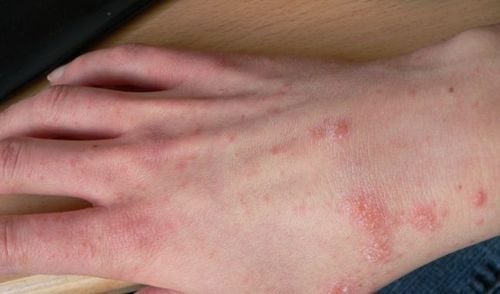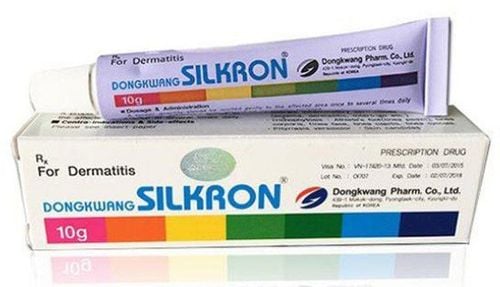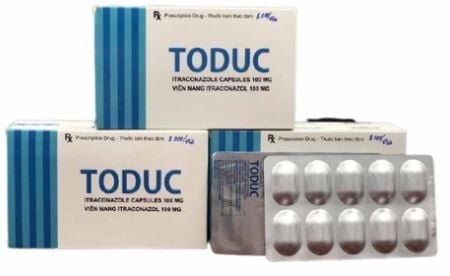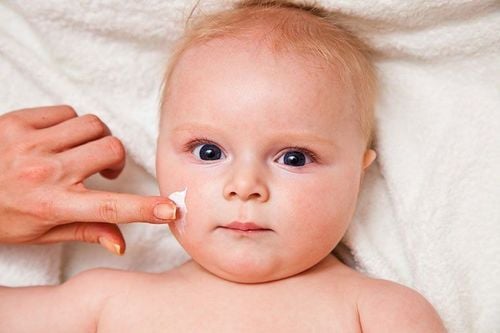This is an automatically translated article.
Scabies is a very itchy rash caused by a small, eight-legged mite called Sarcoptes scabiei, which burrows into the skin. Scabies is usually spread by prolonged, close skin-to-skin contact (eg, holding hands), is common in school-age children and can also be seen in infants. If left untreated, scabies can be spread to all family members through bed linen, couches, and towels. Ticks and their eggs can live on clothing or bedding for one to two days. In this article we will provide useful information for parents about scabies in babies.
1. What is scabies?
Scabies is a skin irritation caused by the penetration of small parasitic mites (Scientific name of the tick is Sarcoptes scabiei) that burrow under the skin. Female ticks usually enter the skin through skin folds, such as the spaces between the fingers, and burrow or penetrate the skin, forming a red "line". It then proceeds to lay eggs in the skin, which will later hatch into larvae. The first sign of a scabies infection (actually an infection, but the two words tend to be used interchangeably with scabies) is usually a few small, scaly red (1–2 mm) nodules on the hands and feet. foot. Newborns' skin is often more exposed and sensitive, so these lesions can develop into large blisters or pus-filled bumps. The bumpy rash you see is actually an allergic reaction to the eggs and droppings left behind by the ticks.
2. Which children are at risk for scabies?
Your child can get scabies from skin-to-skin contact with someone who has scabies. Scabies is very contagious and anyone can get it even if they are carefully cleaned.
This disease is common in children and infants and can spread rapidly through daycares, daycares and households. Scabies is spread through physical contact, and the more you come into contact with someone who is sick the more likely you are to become infected, which is why people living in the same household are especially susceptible.
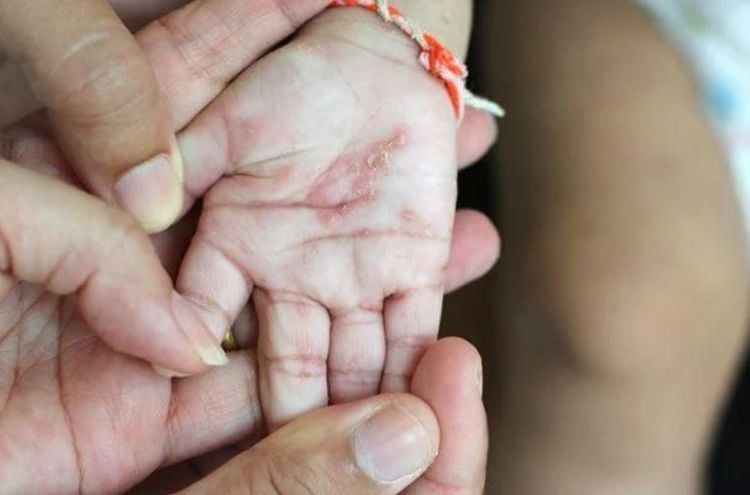
Bệnh ghẻ thường phổ biến ở trẻ em và trẻ sơ sinh
3. Causes of scabies in infants.
Scabies mites are the sole root cause of scabies. These tiny creatures burrow into the top layer of your skin, excrete feces, and lay eggs there. They are known to be able to survive beneath the skin for up to a month. These mites can be found anywhere and are known to require a "host" to survive, namely a human host. Without one, they usually die within a day or two.4. Where do scabies mites live and can we see them?
Scabies mites can live in many public spaces for up to two or three days, they can live on bed sheets, towels, clothes or even in baby diapers but up to 3 days, if too 3 days they need to parasitize on the human body to maintain life. The most common habitat of these mites is human skin. Due to their short life cycle, they can reproduce in large numbers and quickly. This is also one of the reasons why they can spread to others at such a rapid rate.
Scabies mites are difficult to see with the naked eye. A fully grown scabies mite can be as small as a small pin. These mites are usually round and have 8 legs. These insects are not easily seen on most surfaces, but paying close attention can spot the mites before they can harm you or your child.
5. Signs and symptoms of scabies in babies.
Newborn scabies can begin to manifest over a period of 3-4 weeks, which can cause a large red rash with spikes on the bottom of the baby's feet, between the fingers and toes , the inside of the wrist and the inside of the elbow. During this stage, your baby may cry a lot due to the itching.
In toddlers, the symptoms are similar to those in infants, but because older children already know how to scratch, it can lead to a skin infection that spreads to many parts of the child's body. In addition, older children may have signs on parts of the body such as the edges of the feet, which is uncommon for scabies in infants.
In older children and adults, the rash appears on the hands, wrists, genitals and abdomen.
You may also see curved lines or razor-thin red lines where the mites burrow under the skin. Your child may also get small pustules (inflamed areas filled with pus, like small pimples) or small, water-filled blisters.
The itch is usually most intense after a hot bath or at night, and it can wake your child up. Scales can form on areas where your child is scratched and can develop a bacterial infection (like impetigo) or a staph infection.
If this is your child's first episode of scabies, it can take 4 to 6 weeks from the time the mite attaches to the time when your child starts to itch. If your child has had scabies before, his reaction time will be much shorter, just one to three days.
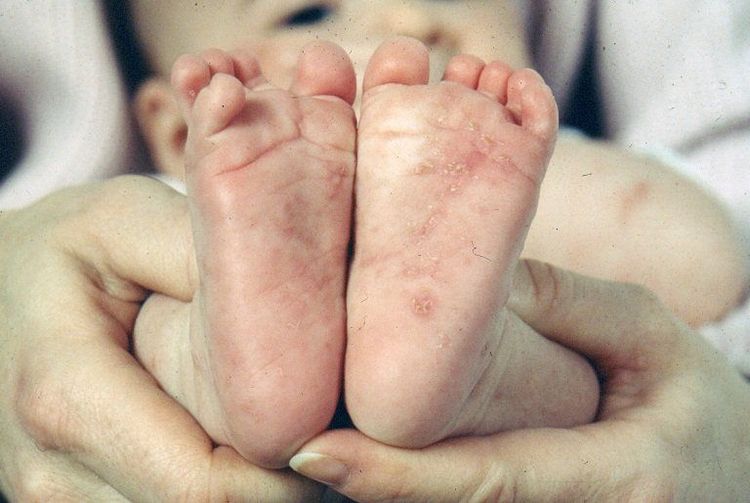
Ghẻ thường phát ban ở dưới bàn chân của trẻ
6. How is a newborn baby diagnosed with scabies?
You should call your doctor right away if your child develops an unexplained rash. The sooner the treatment is given, the sooner the child will feel better.
Your doctor will look at the rash and do some painless testing that involves scraping a thin layer of skin over the rash and examining it under a microscope for mites, larvae, eggs, and feces. of them.
7. Treatment methods and drugs used in treatment
The radical treatment for scabies is usually topical application. Your doctor will prescribe some topical creams and lotions such as:
Permethrin Cream - Apply at night and wash off in the morning. Reapply permethrin cream after 1 week. Permethrin has been approved for use in infants 2 months of age and older. Crotamiton Cream - Apply once daily for 2 consecutive days and wash off 48 hours after last application. Sulfur Ointment - Apply nightly for 3 consecutive nights and wash off for 24 hours after last application. This is usually the best choice for babies and for pregnant and lactating women as it is very safe to use. lindane lotion or cream - Wash off cream or lotion after 8 hours. Lindane can be toxic to some people. Infants and young children should not be treated with guise leaves, pregnant or nursing women, or people with a neurological condition (neuropathy) should not. For more severe scabies, your child's doctor may prescribe oral medication:
Ivermectin - Take it once and then repeat 1-2 weeks later. Ivermectin should not be used by children younger than 5 years of age or weighing less than 15 kg (about 35 lb), or by pregnant or nursing women. Antihistamines. Antibiotics – If any scratched areas appear to be infected with bacteria, your doctor may prescribe oral antibiotics. Steps to apply cream:
Cut fingernails and toenails for children. Gently rub and spread the cream evenly over the scabs and rashes. Apply the cream over the entire surface of your child's skin. Including the folds of the body, including the inside of the navel, the folds of the buttocks, and between the toes. If you have children old enough to scratch, apply the cream to the face and scalp as well as the superficial areas of the ears. No part of the body is missed, this ensures every mite dies. Make sure the cream stays on the baby's skin for the required amount of time as directed by the doctor. It should be applied to children at night while they are sleeping and have them wear gloves to prevent them from accidentally swallowing the cream. The time required for the cream to take effect is from 8 to 12 hours, after which the cream should be washed off the baby's skin. Continue to maintain the cream for the child without skipping any days as directed by the doctor. It can take up to 3 weeks for the itching to go away as your child's immune system continues to react to the dead tick. However, new burs and rashes will stop appearing 48 hours after effective treatment.
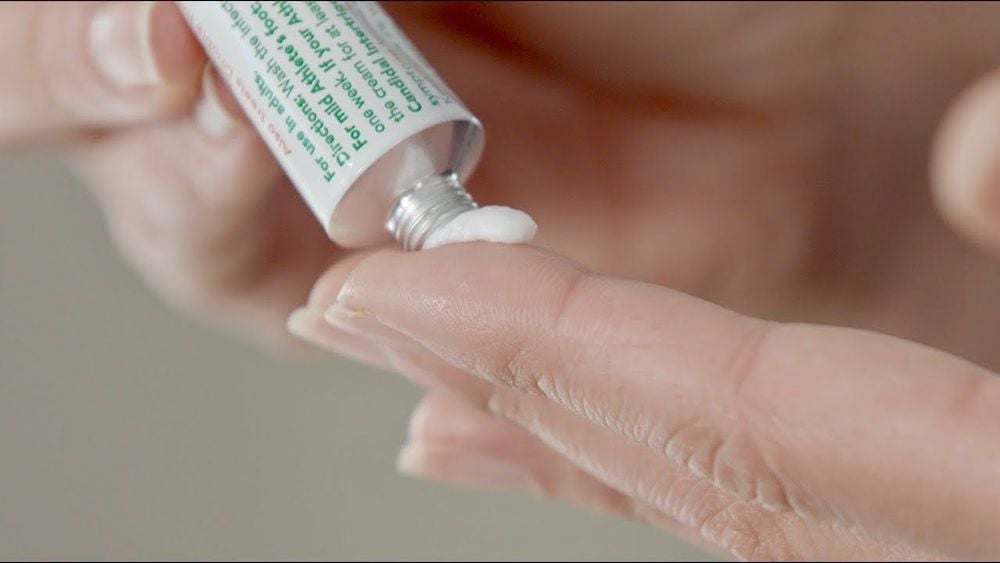
Cha mẹ có thể sử dụng thuốc bôi theo đúng chỉ định của bác sĩ
8. Prevention for other family members
Doctors recommend that you wash all clothes, towels and bedding your child has used in the previous 72 hours in water hotter than 60°C and dry in a dryer. Vacuum floors, furniture, carpets. Seal any stuffed animals or non-washable toys in a plastic bag for one week. Scabies mites cannot live that long without a human host.
Family members who have direct skin-to-skin contact with the child should seek medical advice. The incubation period for scabies can range from 6-8 weeks, so people can get scabies without even knowing it until they feel the itch. If left untreated, these people can pass the mites back to your child. Ideally, everyone should be treated at the same time to prevent reinfection.
9. Scabies prevention for babies
Sweeping, mopping regularly; Vacuum the house, do not keep the vacuum bag; Wash clothes in hot water; Throw away the diaper you suspect is infected. If you suspect that your child has scabies, immediately take the child to the doctor and note that scabies should not be treated midway, but must be treated thoroughly at the root. When the baby shows signs of scabies, parents should take the baby to a medical facility immediately, to avoid spreading scabies. The Pediatrics Department, Vinmec International General Hospital is one of the few medical facilities with a full range of multi-specialist doctors in dermatology, respiratory, neurological, cardiovascular, digestive... intensive treatment at the most effective pediatric department. If the baby has scabies, the doctor will best treat both the pathology and the aesthetic root. The doctors are all highly qualified, experienced and have successfully received and treated thousands of children with scabies of all ages.
If you have a need to examine and treat scabies for children at Vinmec Pediatric Department, please register directly at the website or contact the hotline system for detailed advice.
Please dial HOTLINE for more information or register for an appointment HERE. Download MyVinmec app to make appointments faster and to manage your bookings easily.
Reference sources: babycenter.com, skinsight.com, parenting.firstcry.com



